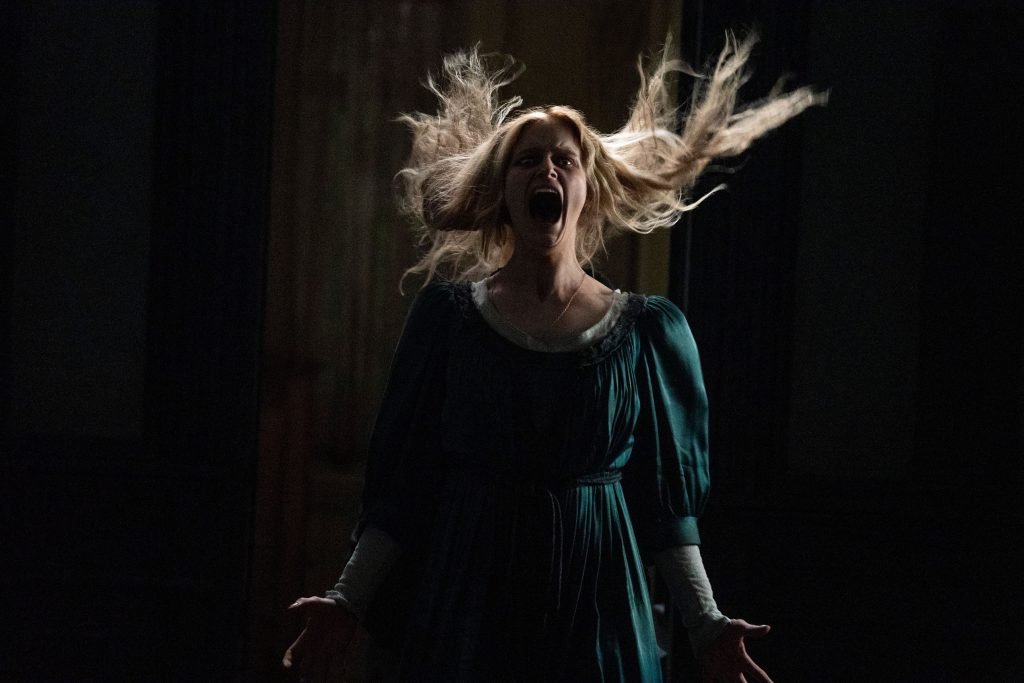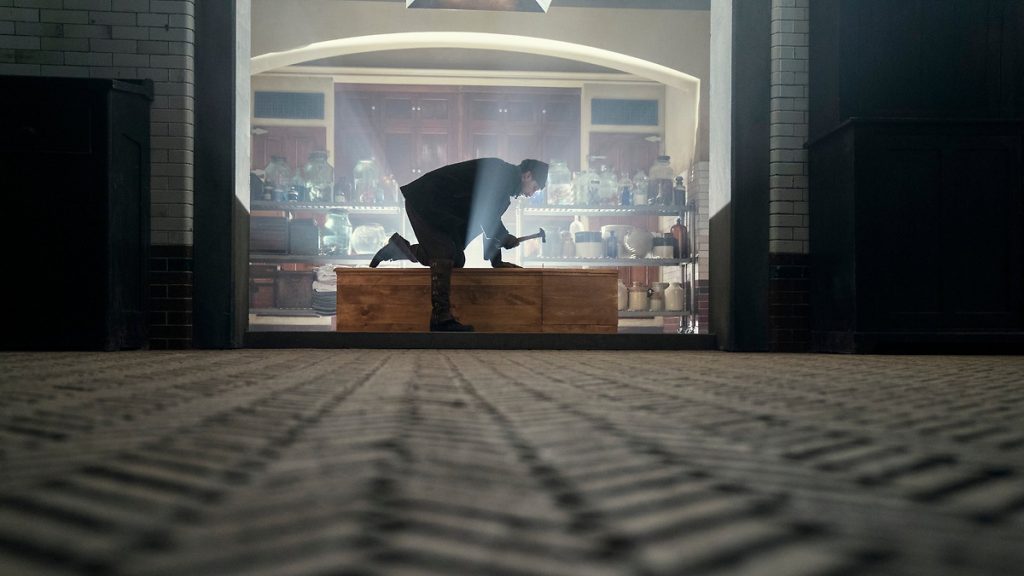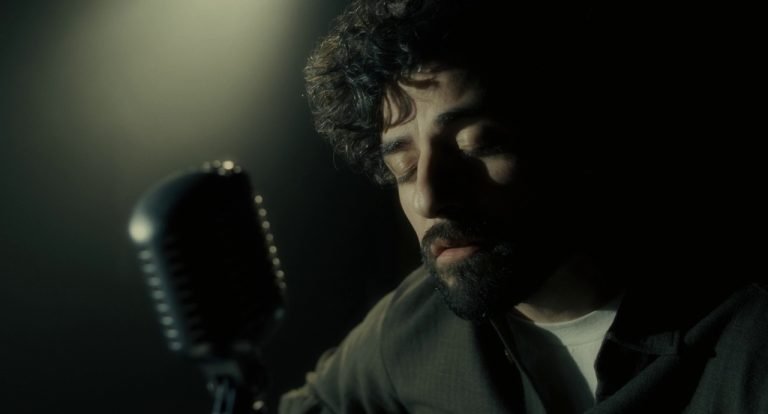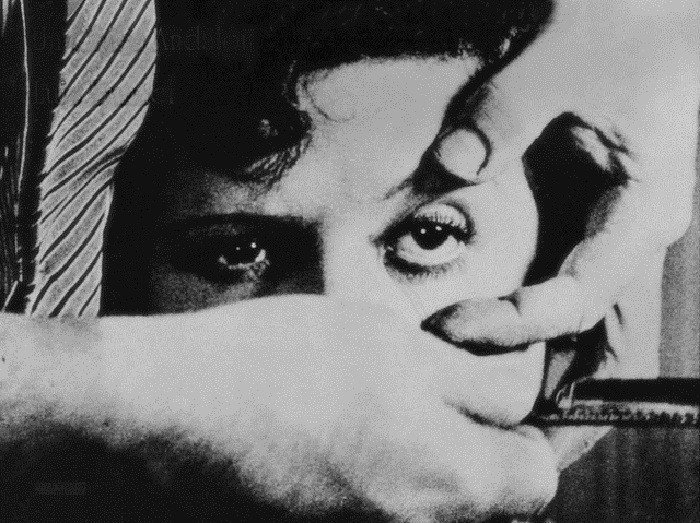Guillermo del Toro’s Cabinet of Curiosities, Episode 1 (Lot 36) & Episode 2 (Graveyard Rats) Recap: Guillermo del Toro is a name that carries a lot of weight in the horror genre. The man has the range to serve delicious morsels of terror that vary in taste and disposition. This spooky season, del Toro grants us the gift of an eight-part anthology series that boast a collection of dark tales. Titled Cabinet of Curiosities, the series has been lovingly created by del Toro. However, each episode is directed by a different director, including the likes of Guillermo Navarro, Panos Cosmatos, David Prior, and Ana Lily Amirpour. At the start of every episode, del Toro emerges from the darkness in a Rod Sterling-esque manner and offers a taste of the horrors to come. There’s a bit of everything: from the horror of human folly to the Lovecraftian unknown that always lurks beneath the surface.
Before we proceed, note that there are SPOILERS ahead for Lot 36 and Graveyard Rats.
Cabinet of Curiosities, Episode 1: Lot 36 Plot Synopsis
The Saga Of A Bitter, Angry Man
Guillermo Navarro’s Lot 36 is based on a short story penned by del Toro and Regina Corrado. The episode opens with an extremely older man watching George H.W. Bush’s speech about the start of the Gulf War while eating microwaved dinner. While chopping up some rodents, the older man dies, possibly due to a heart attack. Cut to a war veteran named Nick Appleton (a brilliant Tim Blake Nelson), a disgruntled racist in enormous debt, who buys out storage units to earn some cash. Most storage units turn out to be dud, as they generally contain sentimental, personal value items or antiques that do not fetch some in the market. During a (rigged) auction, Nick buys out Lot 36, which belonged to the older man at the beginning of the episode.
Assessing the items inside the unit, Nick finds some Nazi-adjacent photographs and a few antiques, along with a candelabra and an authentic seance table with an inverted pentagram etched on it. The unit’s owner suggests an assessor named Agatha (Martha Burns). However, before that, it was revealed that one of the units now owned by Nick, which belonged to a woman named Amelia (Elpidia Carrillo), had been passed over due to a miscommunication. While Amelia attempts to ask Nick for help politely, the latter launches into anti-immigrant rhetoric and berates the woman like the raging racist he is.
Heading to Agatha’s for assessment of the items, Nick learns that the seance table holds three books of power, which appear to be a guide to the invocation of demonic entities. However, Agatha’s friend, Roland (Sebastian Roché), informs him about the existence of a fourth book, which is the most coveted, and would bump up the collection auction to $30,000. Desperate to pay off his dues, Nick asks Roland to accompany him to the unit and search for the final book together. He shouldn’t have done that.
Does A Man Like Nick Deserve Empathy?
The fact that audiences will have mixed feelings about Nick is a testament to Tim Blake Nelson’s performance. On the one hand, the man is a douchebag through and through, believing that he’s entitled to a good life solely because he is a veteran. Nick is the kind of person who despises immigrants and believes that they’re “leeching off” his country’s resources, leaving nothing for those like him who actually deserve it. At the same time, there are moments where he emerges as a sympathetic character: he’s hard of hearing in one ear, has lost his wife, and is submerged in debt. His debt collectors even bash his head and shatter the glass of his truck, which paints him as a desperate, pathetic man who wants to float in a sea of problems.
However, Nick’s deep-seated hatred for immigrants and his racist beliefs are the sole reason for his undoing later on. There was no reason for him to insult Amelia, as it would not have hurt to hand over her personal items from the unit, but Nick chooses to actively not do that. Even when he’s busy not being an entitled racist, he’s doggedly locked onto the prospect of making money and has no basic awareness of dire situations. For instance, when he watches a VHS tape of the older man hopping toward the unit every day, he brushes it off, and when Roland warns him about the fourth book, he shrugs it off like it is nothing.
Roland and Nick venture into the unit one last time, coming across a hollow wall and breaking it down. They discover a decrepit cave of sorts, lined with old newspaper clippings and crucifixes, while a foul stench permeates the space. The two stumble upon a creature, which is actually the older man’s missing sister, Dottie, who has a demon lodged inside her. A ritual circle binds the creature, and the fourth book is propped against a holder. What will Nick do?
Lot 36 Review And Ending, Explained
Despite Roland’s repeated warnings, Nick seems unbothered by sight in front of him, blinded by the need to earn money. He stupidly rushes forward, breaking the binding circle that traps the demon, and lunges for the book. Now that the demon is free, the book self-immolates. The demon, hungry for flesh since the older man’s death, chomps on Roland, its eldritch tentacles wriggling menacingly. Nick finally understands the gravity of the situation and rushes out of the corridor, attempting to escape.
It commences the meatiest part of Lot 36, as the dark, dingy corridors of the storage facility act as the perfect site for a stalk-and-chase scene. The facility’s lights were already established as wonky, which factors into this moment, making it more visceral and anxiety-inducing. The sequence’s lighting, VFX, and cinematography are stunning, and we can palpably feel Nick’s pure terror when he finds the front door locked. A calm Amelia stands outside the door, and Nick pleads with her to open it, asking her to be empathetic. This is ironic, as empathy is a two-way street and should be given to those who deserve it. And Nick is not one of those people who do.
Nick’s inevitable demise is partly due to his own making, as the man was warned many times prior to the situation. Apart from being a racist, he’s also consumed by greed, as he could have left after getting enough cash for the antiques he sold to Agatha. However, the temptation to earn a lot, coupled with an ignorant, devil-may-care attitude, led to the demon being unbound, and his inability to respect people was the final nail in the coffin.
★★★
Cabinet of Curiosities, Episode 2:
Graveyard Rats Plot Synopsis: Greed And Desperation, The Greatest Undoing
Directed by Vincenzo Natali, Graveyard Rats is a gruesome tale about greed, limitless ambition, and the dark terrors that hide beneath the earth, which should be left undisturbed. The episode starts with two young graverobbers attempting to swipe valuables from a corpse, but they’re interrupted by caretaker Messon (David Hewlett), who rebukes them for the crime. After they flee, Messon reveals himself as a graverobber as he jumps into the unearthed grave and swipes the jewels for himself. However, he is faced with a problem that has been plaguing him for months: pesky graveyard rats that get to the body before he does, preventing him from scavenging anything worth value.
However, Messon is a man crushed by deliberating debt and is desperately trying to placate his angry debtors. Launching into a monologue about the hellishness of rats, Messon tries to buy more time but is threatened to be put into a coffin if he doesn’t come up with the money within a week (I think the true horror is economic disenfranchisement and class divide, but I digress). It would be unfair to say that Messon is poor, as we glimpse his cozy, rather semi-lavish Victorian home, but it is possible that he lost a lot of money and ended up loaning more than he bargained for.
Unchecked by the need to prove himself, Messon visits a mortuary assistant and demands to inspect fresh bodies, but to no avail. He chances upon a rich man’s body, who is to be buried in his cemetery. That night, he digs up the grave, but before he can do anything, the rats drag the body inside an underground tunnel! Messon, being Messon, must follow.
Divine Protection Cannot Be Fickly Appealed Or Bargained For
A running gag in Graveyard Rats is the way in which Messon pleads to God during tight spots, appealing for forgiveness and pity whenever he’s in a difficult situation. It is less of a demonstration of faith and more of an attempt to con a higher power, as he’s fickle in his devotion and highly self-centered. After venturing into the tunnel, Messon witnesses pure horror when he sees a huge, monstrous mother rat who chases him and bites his shoulder. Sifting through the grime of the tunnels, Messon accidentally shoots off his toes while aiming at a rat and howls in pain due to the same.
The episode’s premise is infinitely less interesting than Lot 36 and fails to stick the landing even with its horrific ending. The only glue keeping all the threads together is Hewlett, who belts out a convincing performance as a greedy, pathetic man with limitless ambition. The role demands a lot of physicality during the tunnel scenes, and Hewlett tackles this deftly. After Messon falls through a deeper level, he stumbles upon a mass grave with valuables intact on their skeletons and robs as much as he can. However, his greed urges him to covet something he shouldn’t have: a necklace on a kneeling skeleton, hands collapsed in prayer, praying to an eldritch statue that looks menacing.
Graveyard Rats Review And Ending Explained
Ignorance is not the issue in Messon’s situation, which makes his actions all the more stupid and avoidable. Unlike Nick in Lot 36, Messon is aware of the occult history of the underground tunnels and the Black Churches that existed in these spaces, which are remnants of primordial power. Despite knowing what he’s dealing with, Messon decides to push his luck and steal the neckless from the skeleton devotee, who comes alive and grabs him, chasing him to the ends of the tunnel.
Stuck at a dead end, Messon attempts to loosen rocks to find an exit and finds himself cornered by the huge mother rat and the skeleton devotee. With a stroke of good luck, a huge boulder crushes the rat, seals off the skeleton’s path, and creates a narrow clearing for Messon to crawl to the surface. Ecstatic, Messon believes this is divine intervention and pleads with God to grant him this final grace. However, the man inevitably crawls into an empty coffin that seals shut — thanks to his unchecked hubris, Messon has dug himself into his own grave, fulfilling the prophecy of his death in a coffin.
Rats attack him with a vengeance, entering his body and defiling him. In the same manner, he defined countless graves. The two grave robbers chance upon his coffin and open it to find it swarming with rats. Even though they see his body adorned with stolen valuables, they make a run for it, which is an intelligent thing to do. Thus ends a tale of hubris, flawed but enjoyable, which doubles as a cautionary tale against consuming avarice.











